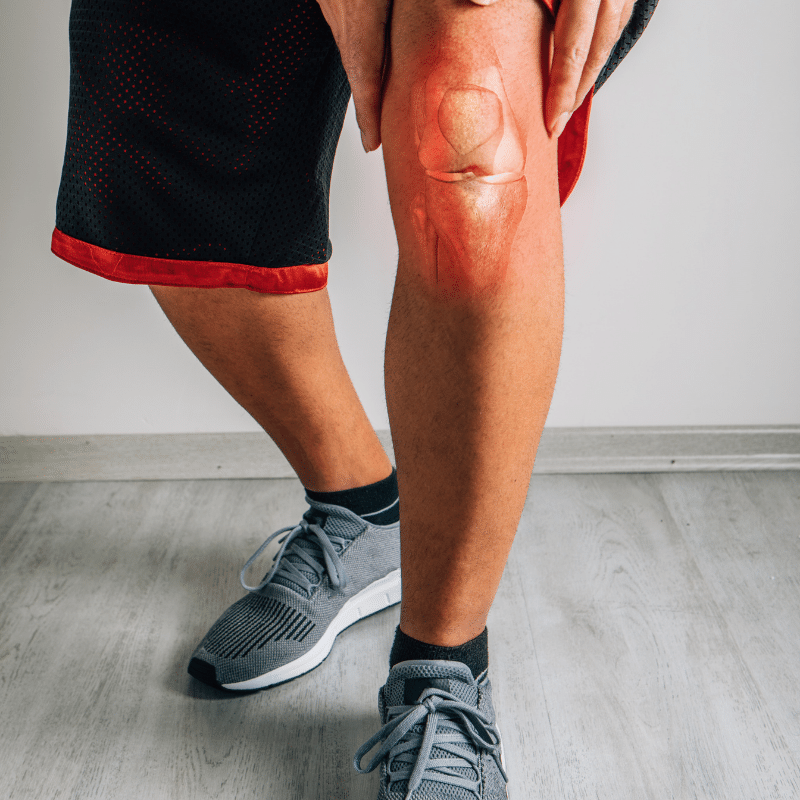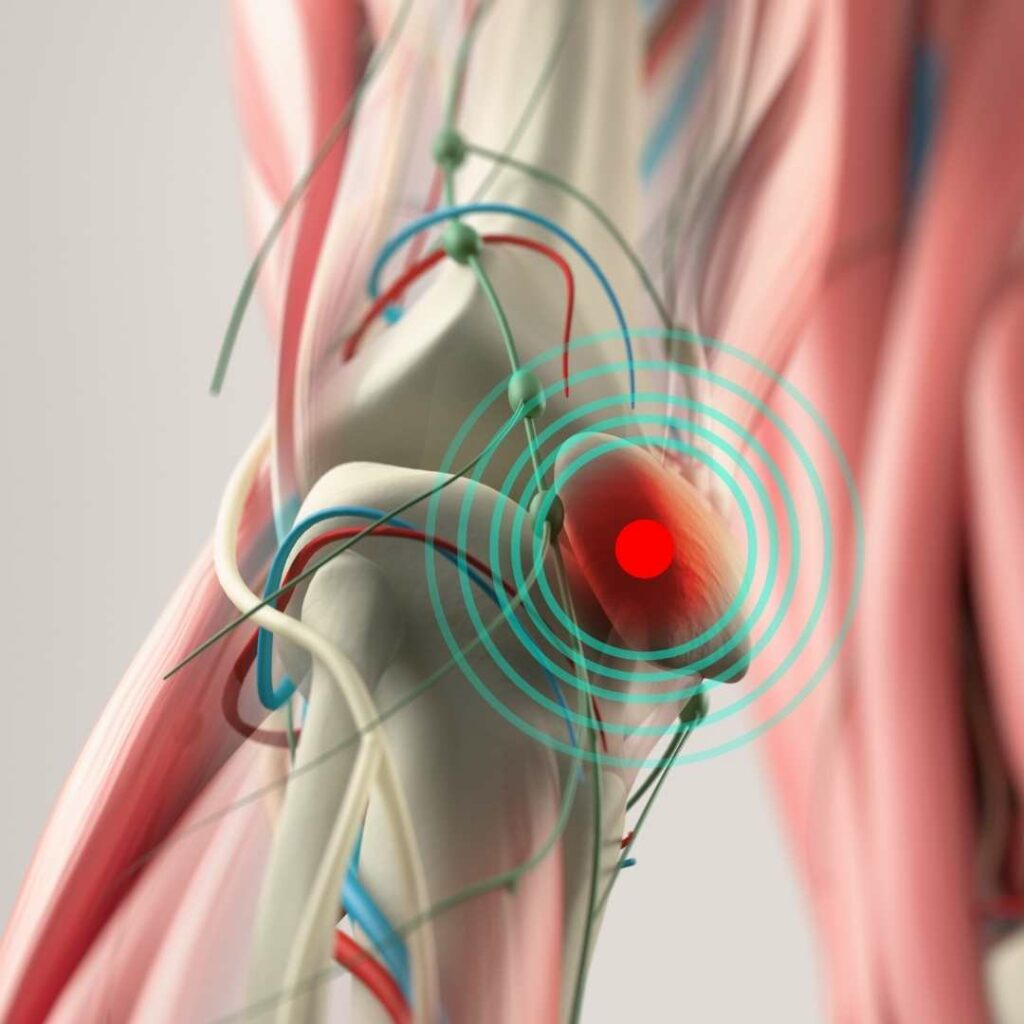Expert Knee Ligament Surgeon In London
WHAT IS AN ACL?
ACL stands for the anterior cruciate ligament. This is a tough fibrous band of tissue that connects the thighbone (femur) with the shinbone (tibia). The ACL runs through the center of the knee in a diagonal direction from the back of the femur to the front of the tibia.
HOW IS THE ACL INJURED?
An anterior cruciate ligament injury is one of the most common knee injuries requiring treatment. Injuries often occur while playing sports such as tennis, skiing, football, rugby, and netball.
COMMON CAUSES
• Sudden change in direction
• Sudden deceleration/stopping
• Landing awkwardly
• Direct impact to the knee

COMMON SIGNS AND SYMPTOMS
Patients often present reporting the following:
• A pop or crack
• Knee pain
• Knee swelling
• Buckling or giving way of the knee (instability)
• Reduced range of movement particularly being unable to fully straighten the knee

HOW ARE acl injuries DIAGNOSED?
The vast majority of knee ligament injuries can be diagnosed from asking you specific questions and performing a physical examination of the knee. ACL injuries are associated with other injuries to the soft tissues around the knee and an MRI scan can be helpful to assess the degree of an injury and help guide treatment. Often x-rays are used to rule out a significant injury to the bone.
TYPES OF ACL INJURIES
ACL injuries are graded from 1 to 3:
• Grade 1 – mild damage from over stretching
• Grade 2 – partial tear where the ACL is damaged but not completely torn
• Grade 3 – complete tear (rupture) where the ACL is torn into separate parts or is pulled off from its bony attachment. Whether an ACL is a grade 2 or 3 can be irrelevant and treatment should be based on the symptoms and signs during examination.
WHAT ARE THE TREATMENT OPTIONS?
NON-SURGICAL TREATMENT:
Some people who injure their knee ligament are able to regain function and stability by following a rehabilitation programme. If your knee continues to give way or you are unable to progress with physiotherapy, surgical reconstruction can then be performed.
SURGICAL TREATMENT:
The aim of surgical treatment is to provide stability to your knee to allow you to get back to your normal activities. The single most important factor that will determine your outcome is the rehabilitation programme.
HOW TO DECIDE ON TREATMENT?
Deciding what treatment is right for you can be difficult and will require a discussion with your ACL surgeon Mr Webb and/or your therapist.
Factors to take into account are:
• Extent of your injury (are other structures involved?)
• Degree of instability/giving way
• Other medical conditions
• Current lifestyle/activities
• Expectations
WHAT DOES ACL KNEE SURGERY INVOLVE?
ACL surgery can be split into two groups:
ACL REPAIR
This is when the ACL has torn from its attachment to the bone. If the injury is identified early and operated on within the first 6 weeks, repair can provide a good outcome and an earlier return to sport. A keyhole operation (arthroscopy) is performed and the ACL is sitched and reattached. The repair is reinforced with an ‘internal brace’ which acts like a seatbelt to reduce stretching the repair.
Watch the Procedure
ACL RECONSTRUCTION
This is when the torn ACL is removed and replaced with a graft (a transplanted piece of tissue or material). Mr. Webb normally uses either a portion of your own quadriceps tendon or one of your hamstring tendons. ACL injuries are commonly associated with injuries to the shock absorbing cartilage (meniscus) inside the knee. These can be addressed at the same time.
Watch the Procedure
What You Want To Know About Our ACL Surgery
What happens before Surgery?
CONSENT:
It is important that you understand the potential risks of ACL surgery as well as the benefits. You will have the opportunity to go through these with Mr Webb. Prior to the procedure, an electronic consent form will be sent to you that goes through the risks in detail. Please do not hesitate to arrange an appointment to discuss any questions you have.
PREHABILITATION:
Mr Webb advises that you start a physiotherapy programme soon after your injury.
The aims of prehabilitation are to:
- Reduce swelling
- Improve range of movement
- Muscle strength
- Practice using crutches
What happens on the day of Surgery?
You will be asked to come to hospital where one of the nursing staff will prepare you for the procedure. The anaesthetist will meet you to discuss the type of anaesthetic and pain relief plan for after. Mr Webb will confirm the details of the procedure with you, answer any last-minute questions and draw an arrow on your leg.
The procedure normally takes approximately 1 to 2 hours. Once you have recovered from the anaesthetic, you will get up with your crutches and practice walking. The vast majority of patients go home a few hours after their operation.
What are the risks of Surgery?
It is important to discuss the risks to ensure that you can assess whether surgery is right for you.
The specific risks of ACL surgery include:
- INFECTION: this risk of infection is less than 1 in 200 cases. An antibiotic is given with the anaesthetic and the graft is soaked in an antibiotic to minimise this risk.
- BLOOD CLOTS: the risk of developing a blood clot is approximately 1 in 1000. Clots in the leg (Deep Vein Thrombosis/DVT) can travel to the lung (Pulmonary Embolus/PE).
- PAIN: people can experience pain following ACL surgery. This is mainly dictated by the degree of damage at the time of injury. Graft choice and surgical technique can help reduce the amount of pain patients feel in the front of their knee.
- WEAKNESS/STIFFNESS: It is important to follow a rehabilitation programme.
- RERUPTURE: 1 in 10 ACL grafts fail. The vast majority of these are due to people returning to sports too quickly or not engaging in physiotherapy. It is important to follow a programme closely and not trying to rehabilitate too quickly.
What happens after Surgery?
It is normal to have pain and swelling following an ACL procedure. There are cold therapy machines available to help reduce the swelling. It is a good idea to see your physiotherapist within the first week following your operation.
At approximately two weeks, you will be seen by Mr Webb to review the incisions and go through the details of what was found and what was performed.
You are likely to require crutches for 2 to 6 weeks and sometimes a brace may be used to protect the knee. Depending on the specifics of the operation, your physiotherapist will start you on a rehabilitation programme that is tailored to you. Most patients will look to return to sport specific rehabilitation from 6 to 9 months, with return to play at around 12 months. It is important that this is determined by your physiotherapist.
At approximately two weeks, you will be seen by Mr Webb to review the incisions and go through the details of what was found and performed.
OUTCOME
- 8 out of 10 people return to the activities they were doing prior to injury.
- 80% of those return to the same level of activity.
- If other structures are injured, this can affect your knee function.
Don't let ACL damage keep you on the sidelines:
Mr Mark Webb, Your Ultimate Ally in Conquering ACL Injuries.
Calling all athletes, young and old, who live for the game! An ACL (anterior cruciate ligament) injury, a common knee injury, can strike during intense moments of play, affecting your performance and daily life. Pain, swelling, and instability become unwelcome companions. But fear not! With Mr Mark Webb’s expertise in knee ligament injury treatment management, a personalized plan awaits you. Embrace a recovery journey and rediscover the joy, rush, and thrill of dominating the field. Say goodbye to doubt and uncertainty as you schedule your appointment with Mr Mark Webb today. Your athletic legacy awaits its triumphant return!
